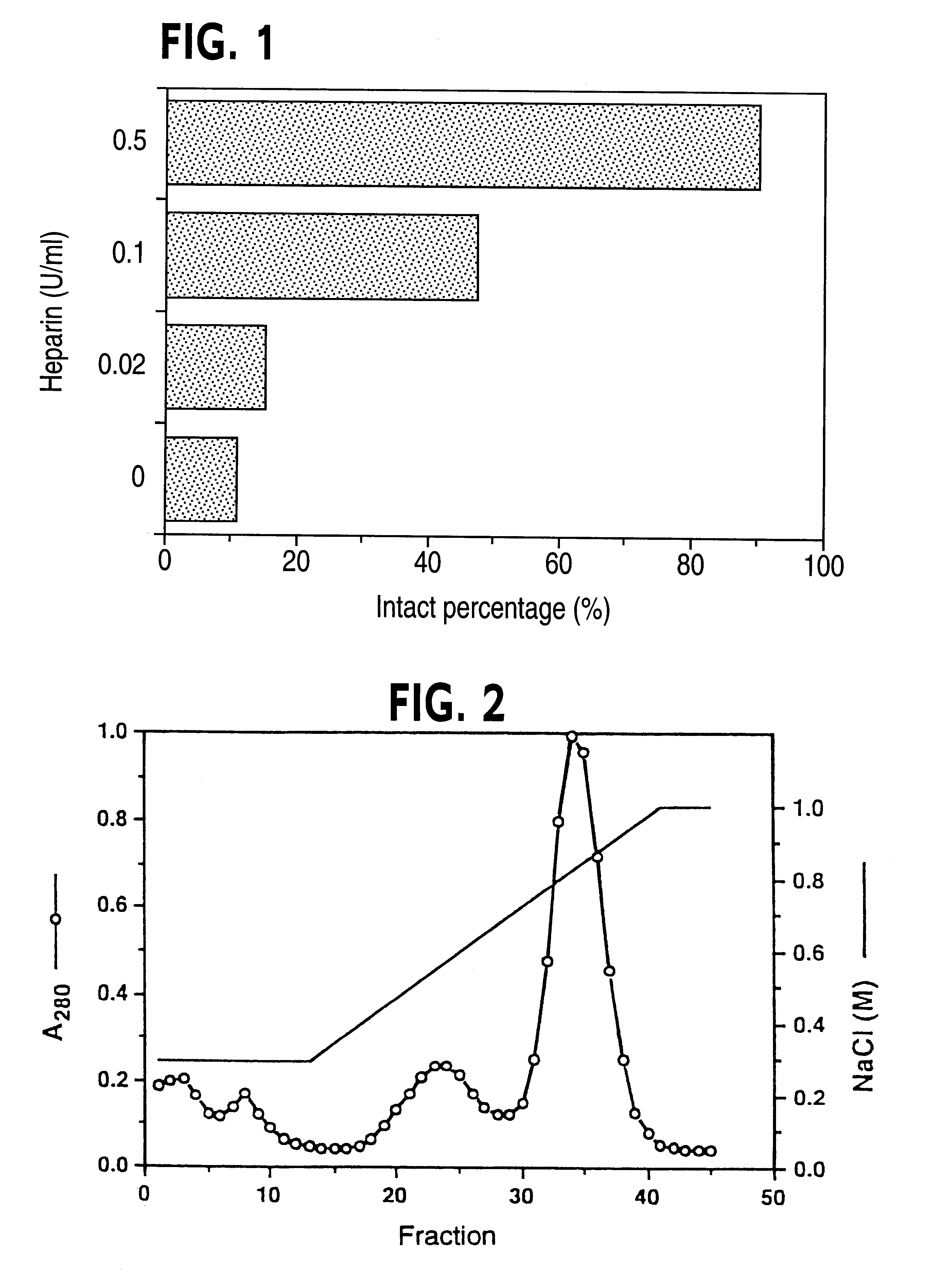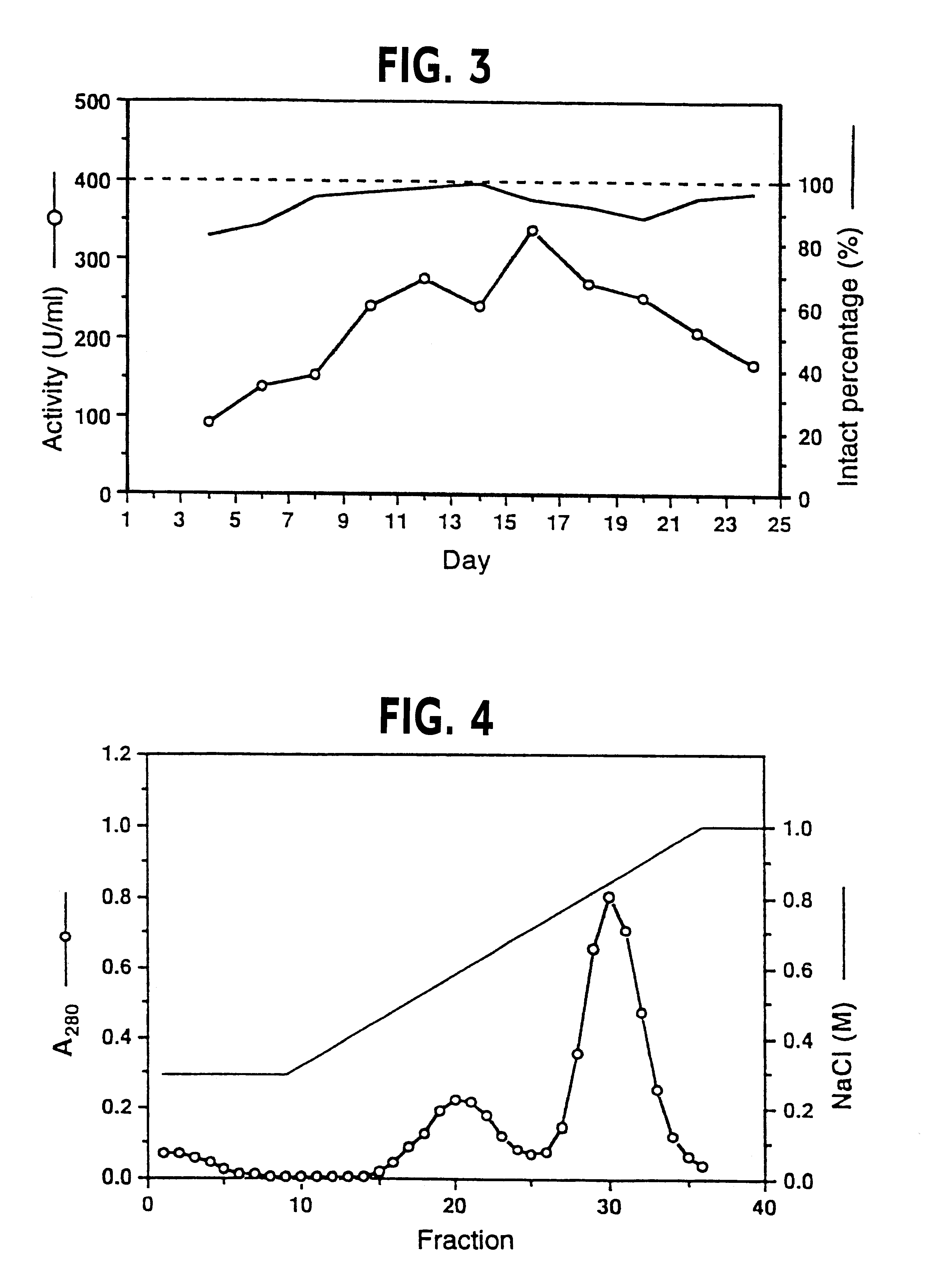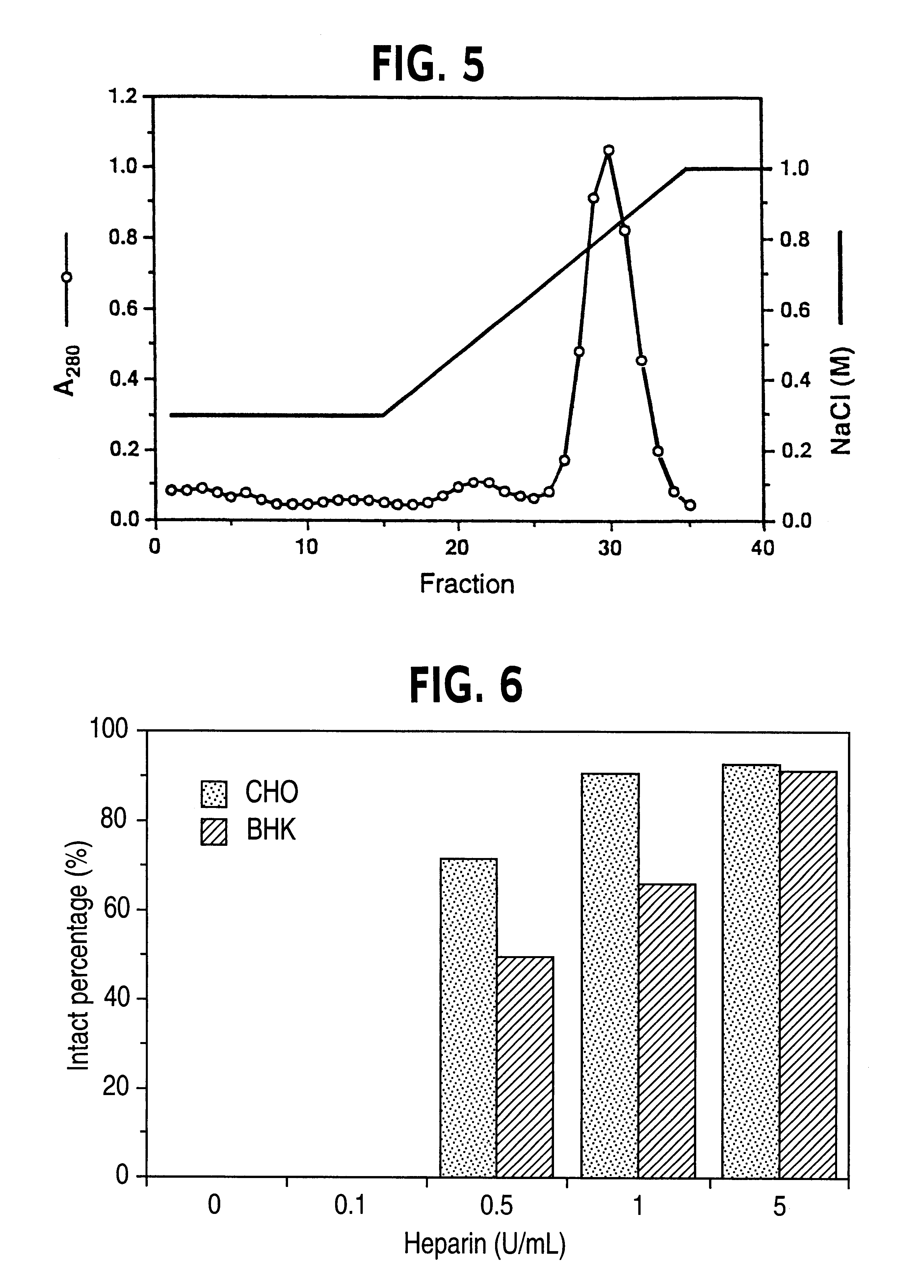Process for preparing tissue factor pathway inhibitor
- Summary
- Abstract
- Description
- Claims
- Application Information
AI Technical Summary
Benefits of technology
Problems solved by technology
Method used
Image
Examples
example 1 (
Expression of recombinant TFPI)
Example 1-1 (Amplification of TFPI cDNA)
Using human placental CDNA library .lambda.gt11 (Clonetech) which is diluted by 10 folds with sterilized water and treated at 100.degree. C. for 2 minutes as a template and 5' and 3' end synthetic oligonucleotides having a nucleotide sequence determined based on the sequence reported by Wun et al. [Wun, T C., J. Biol. Chem., 263, p6001 (1988)] as primers, cDNA of TFPI was amplified by Polymerase Chain Reaction (PCR) with 30 cycles of 94.degree. C. for 1 min., 50.degree. C. for 1 min. and 72.degree. C. for 4 min.
The primers used had the following nucleotide sequences. The obtained PCR products were subcloned and then nucleotide sequences thereof were confirmed by the dideoxy method.
5'-CTC GAG ATG ATT TAC ACA ATG AAG AAA GTA-3' SEQ ID NO:1
5'-GGA TCC TTA GTA GAA TTA ATG TTA CAT TGC-3' SEQ ID NO:2
example 1-2 (
Construction of plasmid expressing TFPI in animal cell and production of cells expressing recombinant TFPI)
The expression plasmid, pCAG.TFPI.dhfr was constructed as follows. The cDNA obtained in Example 1-1 was inserted into the expression vector pCAG.dhfr that contains the chicken .beta.-actin promotor and a dihydrofolate reductase expression unit [Japanese Patent First Publication (Kokai) No. 268968 / 1993, FIG. 9].
Chinese hamster ovary cells (CHO cells) deficient in dihydroforate reductase (dhfr), DG44 [Urlaub, G., Somatic cell and Molecular Genetics, 12, p555 (1986)], were inoculated onto a 6-well plate at 2.times.10.sup.5 cells / well and were cultured in 3 mL MEM alpha medium containing 10% fetal bovine serum (hereinafter referred to as "FBS") / well at 37.degree. C. overnight. The cells were transformed with the expression plasmid pCAG.TFPI.dhfr by the lipofectin method. The method and reagent for lipofectin method were followed to the description of the Kit manufactured by BRL. Af...
example 2 (
Protective effect of heparin from cleavage of expressed intact recombinant TFPI)
CHO-TFPI No. 7 obtained in Example 1 was inoculated onto a 6-well plate at 2.times.10.sup.6 / well and was cultured at 37.degree. C. The next day, the culture medium was exchanged with a serum free culture medium (ASF medium 104--0.5% HSA; 3 mL) supplemented with various concentrations of heparin and the culture was further continued. After 24 hours, an amount of the intact TFPI in the culture medium was measured. As shown in FIG. 1, the intact percentage was around 10% in case of the heparin free culture medium whereas the protecting effect of heparin was proved in case of the culture medium supplemented with heparin at 0.1 U / mL or more. In addition, the percentage of the intact TFPI was about 90% when heparin was added at 0.5 U / mL.
PUM
| Property | Measurement | Unit |
|---|---|---|
| Molecular weight | aaaaa | aaaaa |
Abstract
Description
Claims
Application Information
 Login to View More
Login to View More - R&D
- Intellectual Property
- Life Sciences
- Materials
- Tech Scout
- Unparalleled Data Quality
- Higher Quality Content
- 60% Fewer Hallucinations
Browse by: Latest US Patents, China's latest patents, Technical Efficacy Thesaurus, Application Domain, Technology Topic, Popular Technical Reports.
© 2025 PatSnap. All rights reserved.Legal|Privacy policy|Modern Slavery Act Transparency Statement|Sitemap|About US| Contact US: help@patsnap.com



